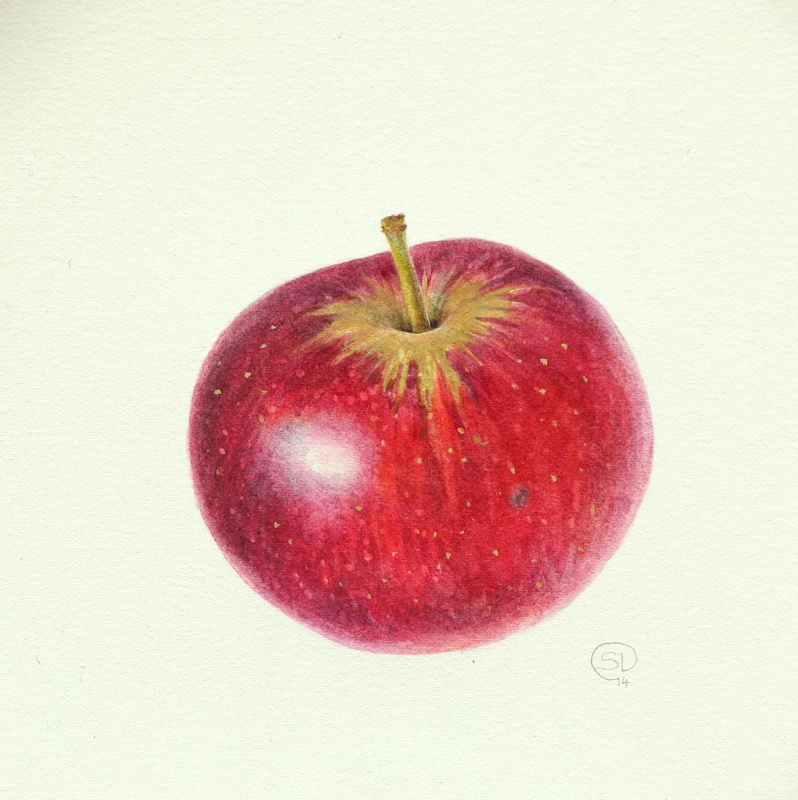I have a confession to make. Although
I love flowers, I don’t really like painting flowers. I know that sounds odd coming from a botanical artist, but I find them really quite
difficult. Perhaps it’s because I don’t paint quickly, or because I prefer dry
brush to wet washes, but flowers have a transient beauty that can fade
before the paint is even on the page. I know I’m not the only artist to howl
with frustration when that perfect bloom wilts before your eyes and drops it’s
petals. It’s far easier to paint fruit and vegetables, which last much longer
and have their own distinct beauty and textures. Flowers can be scary!
However, this
Natural Law exhibition is fast approaching,
and
Liz’s words are ringing in my ears
“Paint the things that people like to
give to each other, like flowers”
So I threw caution to the wind, bought some
lovely stargazer lilies for myself and decided to paint a flower in gouache on
dark green mountboard. Yes, I was feeling brave!
I selected a nice bloom, one that had just opened. I positioned
it using a floral oasis and placed a dark green board behind the flower. If I
was painting on white, I’d use a white board. It just helps isolate the bloom
from the background.
I drew out my design on tracing paper. I find it useful to
draw rough shapes like the circle as a guideline.
I traced the design on the reverse using a white Polychromos
pencil, and then transferred that onto the green mountcard by going over the
design with a pencil. So far, so good… the flower is still fresh and I’m still
feeling quite confident.
Using white gouache, I began to paint over the white pencil lines, and
slowly building up the form of the flower. This is the bit where you
start to question your sanity as it can take a long time to get the right
tones. The gouache tends to dry darker, so you have to keep building up the
layers... and then more layers! Inevitably, I ended up taking quite a bit of
paint back off again too, but fortunately the mountcard is quite forgiving.
I know from previous experience with lilies, that it’s
easier to paint the stamens and stigma first, and then to paint the petals
around them, rather than to try to paint the petals first.
Once I had painted the stamens and stigma, and built up the
form of the petals, it was time to introduce some colour. I switched here from gouache to
watercolour. At first I mixed some of the watercolour with the gouache to make
an opaque paint, but once the gouache is dry, it’s possible to continue
building up the colour in transparent layers.
As well as my red colour chart, I
did a quick chart of the various pinks laid over white gouache on green card.
The colours that I used for the petals were Permanent Rose, Quinacridone
magenta, Purple magenta (Schmincke), Alizarin, Winsor orange, Rose madder. The
shadow colours were Cerulean, Cobalt violet and Indanthrene.
As my friend
Claire Ward says,
“With gouache, it’s a case of
forward and back, forward and back.”
Once I was happy with the petals, it was time to put on those
little spots, and also those tiny protuberances on the petals which act
as important signposts for pollinating insects. Everything on a flower is
so beautifully designed... even those spots follow subtle lines which lead to
the center.
Finally I added the leaves and the stem, which were surprisingly
quite easy to do, although perhaps painting green on green helps. I used Cerulean,
Indanthrene, Lemon yellow and Perylene green.
 |
| Lilium Oriental Stargazer |
Amazingly my little bloom lasted all week, and filled my
studio with it’s divine smell. I still wouldn’t rush to into painting flowers,
but it’s hard to resist their seductive charms.
"When you take a flower in your hand and really look at it, it's your world for the moment. I want to give that world to someone else. Most people in the city rush around so, they have no time to look at a flower. I want them to see it whether they want to or not."
Georgia O’Keefe


































